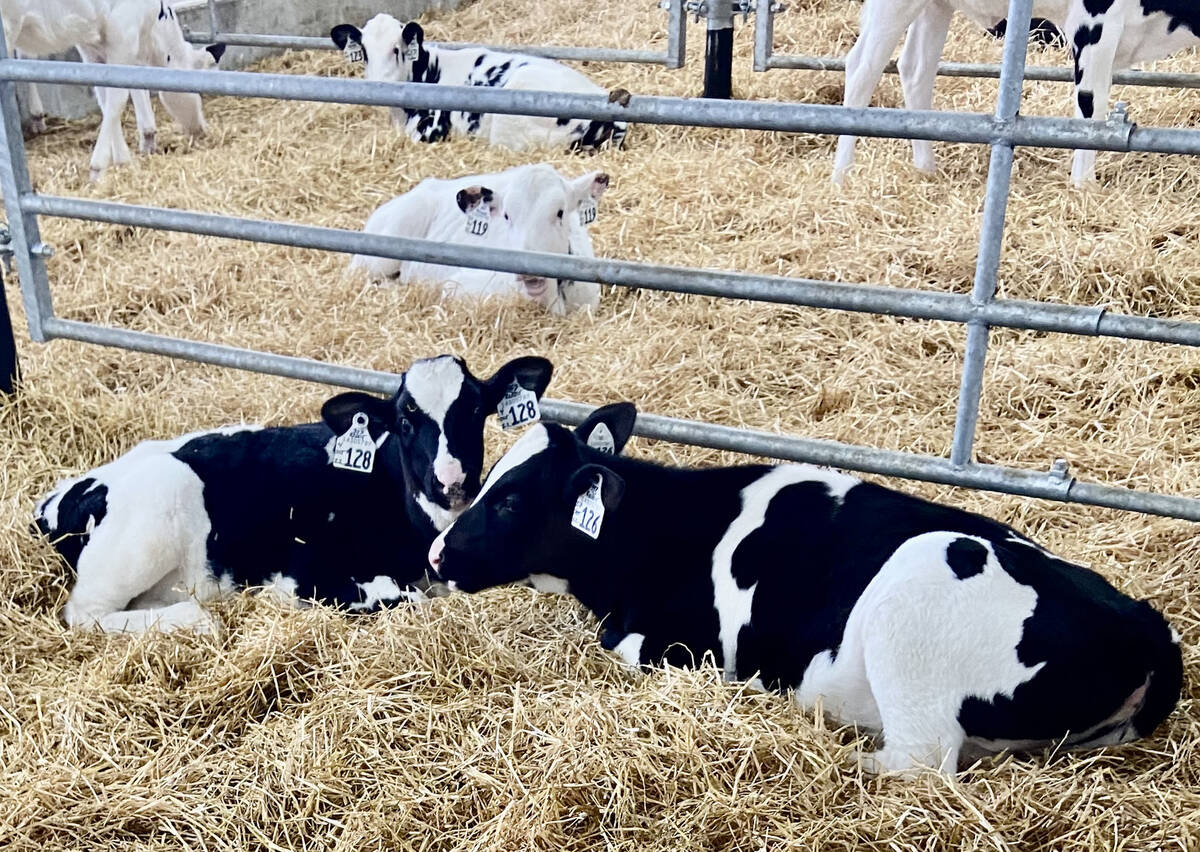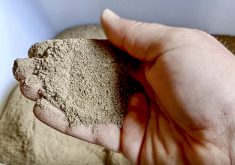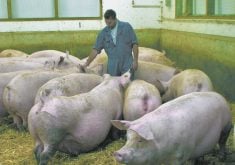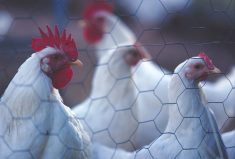A robotic technology common on Ontario dairy farms is showing promise for helping beef feedlot operators increase feed intake in their cows.
A one-year trial using a feed pusher in a feedlot setting has just wrapped up in the province and results show that the technology could be valuable to producers, allowing them to reduce labour and ensure feed intake is consistent both day and night.
Why it matters: Ensuring feed intake is consistent for feeder cattle helps reduce the risk of health issues such as acidosis and the need for antimicrobial treatment.
Read Also

Back to the drawing board for sexed semen fertility ratings
Lactanet, the national genetic evaluation and dairy data provider, goes back to the drawing board with its sexed semen fertility rating index prototype.
Christoph Wand, livestock sustainability specialist with the Ontario Ministry of Agriculture, Food and Rural Affairs (OMAFRA) said the “crazy idea” to try a feed pusher in a feedlot was hatched while he and OMAFRA Beef Cattle Specialist Megan Van Schaik and Ontario Corn Fed Beef (OCFB) Quality Assurance Manager Brent Cavell were sitting on a feed bunk at a farm where they had been doing some research last summer. The team has been working on improving feed bunk management with producers and were discussing their observations and next steps.
“We know there’s a challenge keeping feed in front of cattle,” he said. “We said to ourselves, wouldn’t it be fun to demo a feed pusher in one of these feedlot barns?”.

Feed pushers are an automated technology used in the dairy industry. They reduce labour by eliminating manual push-ups and allow for push-ups, even when the farmer is away from the barn.
Beginning in early August 2021, feed pushers were installed at two feedlot sites. Each site had similar technology installed by two different manufacturers. Before installation, feed was pushed up during the day either manually or by a skid steer. To compare feeding behaviour, trail cameras were installed to determine if the technology had the ability to encourage more frequent bunk visits, and consequently increase cattle feed intake.
Feeding behaviour and intake were compared between three different bunk management styles for groups of newly received cattle: manger-style (J bunk), flat bunks with push-ups from the automated feed pusher, and flat bunks with push-ups using a blade mounted on a skid steer.
Wand says the final results are currently being evaluated, but Ken Schaus, owner of one of the sites using the feed pusher, says he believes that dry matter intake (DMI) has been higher for the cattle group where the feed pusher was used.
“I do feel the feed pusher is driving up feed intake compared to the skid steer,” he said.
He said the difference between the two methods might be less than a half a pound in some sets of cattle per head today, “but I’m thinking it’s probably closer to a pound.”
Feed intake is something Schaus pays very close attention to. He is one of the province’s largest cattle feeders, with three feedlot operations in Walkerton, Alliston, and Elmwood. The feed pusher was being trialed at the Walkerton location, where he feeds 1,440 cattle.
Schaus says it’s hard to measure with exact numbers because buys cattle mostly from western Canada and every set of cattle he receives is different. “But it all boils down to dry matter intake.”
Ensuring cattle are feeding as much DMI as possible also means less feed is wasted. “This feed is $400 [a tonne] and even if you grow it, or buy it, it’s still $400.”
Like us, cows prefer fresh feed. “You wouldn’t eat a three-day old donut or sandwich,” he said, noting that feed in J bunks and flat bunks that don’t have regular push ups can get an ammonia smell quickly, particularly in hot humid weather, leading to feed refusal.

The facility in Walkerton is a little over 40 years old and showing its age, and Schaus says it is being replaced by a WeCover pack barn in October. He’s been impressed with what he’s seen with the feed pusher and plans to have one in the new barn.
The feed pusher trial is one of several recent projects conducted by OMAFRA and OCFB to improve bunk management practices in Ontario feedlots in the past two years.
In the summer of 2020, trail cameras were used in several feedlot barns to help producers reduce feed waste and determine how long feed the feed bunks were empty during the day. Ideally, feed bunks should only be empty for only an hour or less. The 2020 project found that bunks were often left empty for longer than an hour with the average length of time being 5.5 hours.
“This long period of time without access to feed can cause digestive issues and performance problems for cattle,” Van Saik said in a research summary. The study found there was an increased response from the cattle during feeding times and feed push-ups, “meaning that cattle are more likely to visit the bunk directly after or during feeding or push-ups.”
In the summer of 2021, bunk management strategies were evaluated for newly received cattle. Through this study, the importance of consistent feeding times and feed availability was shown to be crucial for achieving maximum gains and should be a focus on feedlots, said Van Saik.
“The importance of proper bunk management cannot be over-emphasized,” Van Saik said in her summary of the trial, available at OMAFRA’s Virtual Beef web portal. “Having consistent feeding times and frequent push-ups allows for the cattle to have a more consistent feed intake throughout the day and night, reducing stress, therefore, improving overall performance.”













